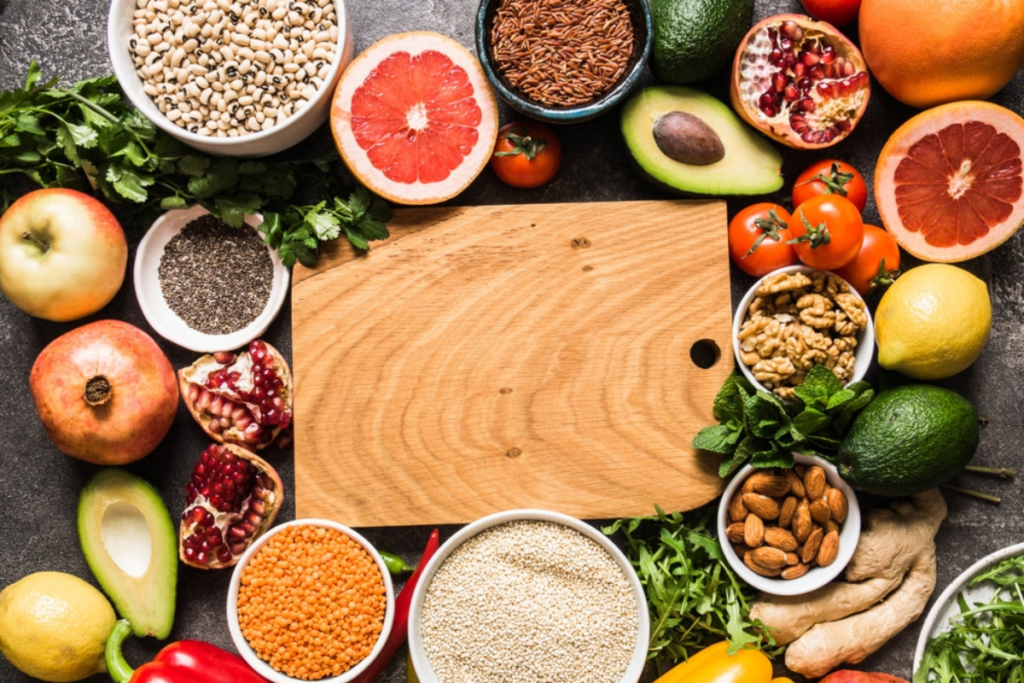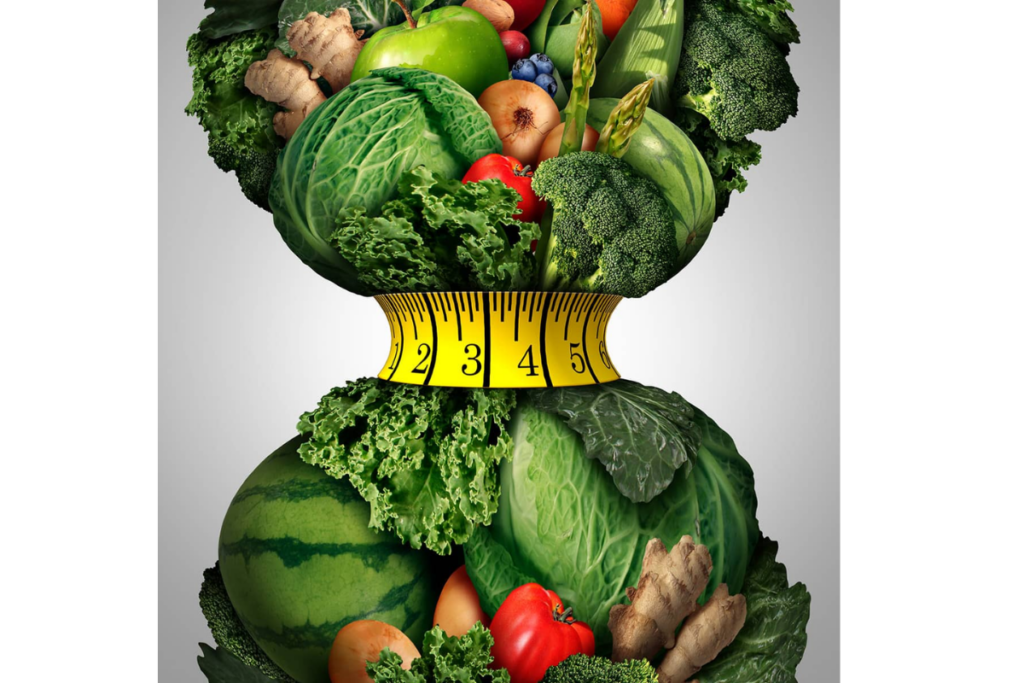Winter can be a challenging time for managing weight and specifically targeting visceral fat, a type of body fat stored within the abdominal cavity. Unlike subcutaneous fat, which is located just beneath the skin, visceral fat surrounds vital organs and can have significant health implications, including increased risks of heart disease, diabetes, and stroke.
During the colder months, the combination of reduced physical activity and the temptation of calorie-dense comfort foods can lead to an increase in visceral fat. However, certain dietary choices can effectively counter this trend. This article aims to explore the list of foods that burn visceral fat, offering practical solutions to tackle this hidden health hazard during winter. By understanding the nature of visceral fat and the foods that can help in reducing it, we can approach winter weight management with confidence and clarity.
Understanding Visceral Fat: More Than Just Belly Fat
Visceral fat is a type of fat that is stored deep within the abdominal cavity, surrounding vital organs such as the liver, pancreas, and intestines. This differentiates it from subcutaneous fat, which is the fat that lies just beneath the skin.
Why Visceral Fat is a Significant Health Concern:
- Metabolic Effects: Visceral fat is metabolically active and can release various substances into the bloodstream that influence bodily functions. It is associated with insulin resistance, inflammation, and higher LDL (bad) cholesterol levels.
- Risk of Chronic Diseases: An accumulation of visceral fat increases the risk of serious health conditions, including type 2 diabetes, heart disease, and certain types of cancer.
The challenge in targeting visceral fat, particularly in winter, lies in the subtlety of its accumulation and the lifestyle factors that contribute to it. The cold weather often leads to a decrease in physical activity and an increase in the consumption of unhealthy foods, both of which can contribute to an increase in visceral fat.
Understanding these risks and the nature of visceral fat is crucial in developing effective strategies for its reduction. The next sections will delve into the role of diet in combating visceral fat and provide a comprehensive list of foods that burn visceral fat.

The Role of Diet in Reducing Visceral Fat
Diet plays a pivotal role in managing and reducing visceral fat. Unlike other types of fat, visceral fat is more responsive to dietary changes and certain foods have been identified as particularly effective in targeting this type of fat.
Importance of Diet in Targeting Visceral Fat:
- Nutrient Balance: A diet rich in certain nutrients can influence the body’s ability to metabolize and store fat, particularly in the abdominal region.
- Hormonal Impact: Foods can affect hormonal balances which in turn impact the accumulation and breakdown of visceral fat.
Types of Foods Effective in Burning Visceral Fat:
- Protein-Rich Foods: Foods high in protein, such as lean meats, fish, and legumes, help in building muscle mass, which can enhance metabolism and aid in the reduction of visceral fat.
- Fiber-Rich Foods: Foods like whole grains, vegetables, and fruits that are high in fiber can promote a feeling of fullness, reduce overall calorie intake, and are instrumental in the breakdown of visceral fat.
- Healthy Fats: Sources of healthy fats, such as avocados, nuts, and olive oil, can help in regulating appetite and preventing the accumulation of visceral fat.
Comprehensive List of Foods That Burn Visceral Fat
Targeting visceral fat through diet involves incorporating a variety of foods known for their fat-burning properties. This list of foods that burn visceral fat includes options that are not only effective but also can be easily integrated into a balanced diet.
Detailed List of Foods Known to Help Reduce Visceral Fat:
- Green Tea: Rich in catechins, green tea boosts metabolism and enhances the body’s ability to burn fat, particularly in the abdominal area.
- Whole Grains: Foods like quinoa, brown rice, and oats are high in fiber, which helps in regulating blood sugar levels and reducing fat storage around the midsection.
- Lean Protein: Sources such as chicken breast, turkey, tofu, and legumes help in building muscle mass, which is essential for burning visceral fat.
- Berries: Strawberries, blueberries, and raspberries are high in antioxidants and fiber, aiding in the reduction of fat accumulation.
- Leafy Greens: Vegetables like spinach, kale, and Swiss chard are low in calories but high in fiber, making them ideal for visceral fat loss.
- Fatty Fish: Salmon, mackerel, and sardines are rich in omega-3 fatty acids, which have been shown to reduce visceral fat.
How Each Food Contributes to Visceral Fat Loss:
- Green Tea: The catechins in green tea, particularly epigallocatechin gallate (EGCG), enhance fat oxidation.
- Whole Grains: The fiber in whole grains helps maintain a feeling of fullness, reducing the likelihood of overeating and aiding in weight management.
- Lean Protein: High protein intake increases the release of the fullness hormone PYY, decreasing appetite and leading to reduced calorie intake.
- Berries: The antioxidants in berries can improve blood flow and enhance metabolic function, aiding in fat loss.
- Leafy Greens: These vegetables are nutrient-dense, helping to satisfy hunger with fewer calories.
- Fatty Fish: Omega-3 fatty acids in these fish improve insulin sensitivity, which can help combat fat stored around the waist.
By incorporating these foods into your daily diet, you can take a significant step toward reducing visceral fat. Each of these foods offers unique benefits that contribute to the overall goal of visceral fat loss.
Incorporating Fiber-Rich Foods for Internal Fat Reduction
Dietary fiber is a key component in the battle against visceral fat. Fiber-rich foods not only aid in digestion and help maintain a healthy gut but also play a significant role in weight management, particularly in reducing internal fat.
Role of Dietary Fiber in Combating Visceral Fat:
- Appetite Control: Fiber-rich foods increase satiety, helping to reduce overall calorie intake. This is particularly important for controlling and reducing visceral fat.
- Stabilizing Blood Sugar Levels: High-fiber foods help to regulate blood sugar levels, which is crucial in preventing insulin spikes that can lead to fat accumulation, especially around the abdominal area.
Suggesting Winter-Friendly, Fiber-Rich Foods:
- Legumes: Beans, lentils, and chickpeas are excellent sources of fiber and can be easily incorporated into hearty winter soups and stews.
- Whole Grains: Quinoa, barley, and whole wheat are not only filling but also provide the necessary fiber to aid in fat loss.
- Winter Vegetables: Root vegetables like carrots, beets, and parsnips, as well as winter squash, are high in fiber and perfect for cold-weather recipes.
Ways to Include These Foods in Meals:
- Breakfast Options: Start your day with a bowl of whole-grain cereal or oatmeal, topped with your choice of fruits or nuts.
- Lunch and Dinner: Incorporate legumes and whole grains into your main meals. For example, a quinoa salad or a bean stew can be both satisfying and nutritious.
- Snacks: Opt for fresh fruits, vegetable sticks, or a handful of nuts for a fiber-rich snack.
Incorporating these fiber-rich foods into your daily diet can greatly contribute to the reduction of visceral fat. They provide essential nutrients while also helping to keep you full and satisfied, reducing the likelihood of indulging in unhealthy snacks and meals.

Conclusion: A Holistic Approach to Reducing Visceral Fat
In concluding our exploration of targeting visceral fat, especially during the winter months, it’s clear that a holistic approach is most effective. This strategy involves not just focusing on a list of foods that burn visceral fat but also considering other lifestyle factors that contribute to overall health and weight management.
Key Takeaways:
- Dietary Choices: Incorporating specific foods into your diet, particularly those rich in fiber and healthy nutrients, plays a crucial role in reducing visceral fat.
- Variety and Balance: A varied diet that includes whole grains, lean proteins, fiber-rich fruits and vegetables, and healthy fats is essential for managing visceral fat.
- Beyond Diet: While diet is a critical component, it should be part of a broader strategy that includes regular physical activity, stress management, and adequate sleep.
By adopting this comprehensive approach, you can effectively combat the accumulation of visceral fat. It’s not just about the reduction of belly fat but also about improving overall metabolic health and well-being. Remember, the journey to reducing visceral fat is a continuous one, requiring consistency and dedication to dietary and lifestyle changes.
Winter presents unique challenges but also offers the opportunity to discover and enjoy nourishing and satisfying foods that contribute positively to health and well-being. Embracing this holistic approach, combining diet with other healthy lifestyle practices, is key to achieving and maintaining a healthy body and reducing visceral fat effectively.
FAQs: Common Questions About List of Foods That Burn Visceral Fat
Q1: What are the best foods for reducing visceral fat?
A1: Foods known for reducing visceral fat include green tea, whole grains, lean protein, berries, leafy greens, and fatty fish rich in omega-3 fatty acids.
Q2: How does green tea help in reducing visceral fat?
A2: Green tea contains catechins, particularly EGCG, which boost metabolism and enhance the body’s ability to burn fat, specifically in the abdominal area.
Q3: Are all fats bad for visceral fat accumulation?
A3: No, not all fats are bad. Healthy fats, such as those found in avocados, nuts, and oily fish, can actually help in reducing visceral fat by improving satiety and metabolism.
Q4: Can I reduce visceral fat by diet alone?
A4: Diet plays a crucial role, but the most effective approach for reducing visceral fat is a combination of a healthy diet, regular exercise, and overall lifestyle changes.
Q5: How quickly can dietary changes affect visceral fat?
A5: The rate at which dietary changes affect visceral fat varies by individual. Consistent, healthy dietary changes, combined with exercise, can yield noticeable results over several weeks to months.
Q6: Is it possible to specifically target visceral fat loss?
A6: While you cannot target visceral fat loss exclusively, a diet rich in fiber, lean proteins, and healthy fats, coupled with regular exercise, can effectively reduce overall body fat, including visceral fat.
Q7: Are fiber-rich foods effective in reducing visceral fat?
A7: Yes, fiber-rich foods, such as whole grains, legumes, and vegetables, help control appetite and can lead to overall fat loss, including the reduction of visceral fat.
6 Low Carb Foods That Burn Belly Fat – Are You Eating Them?